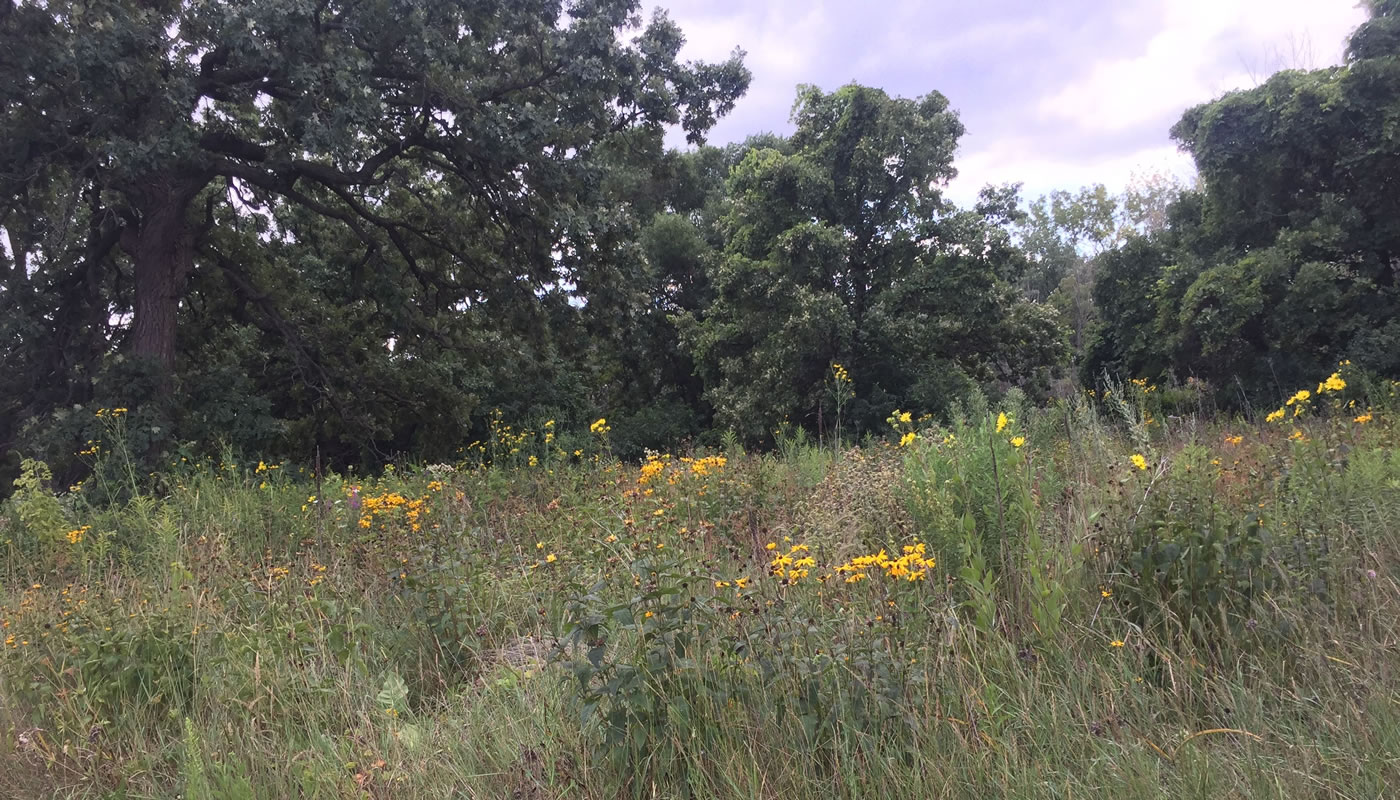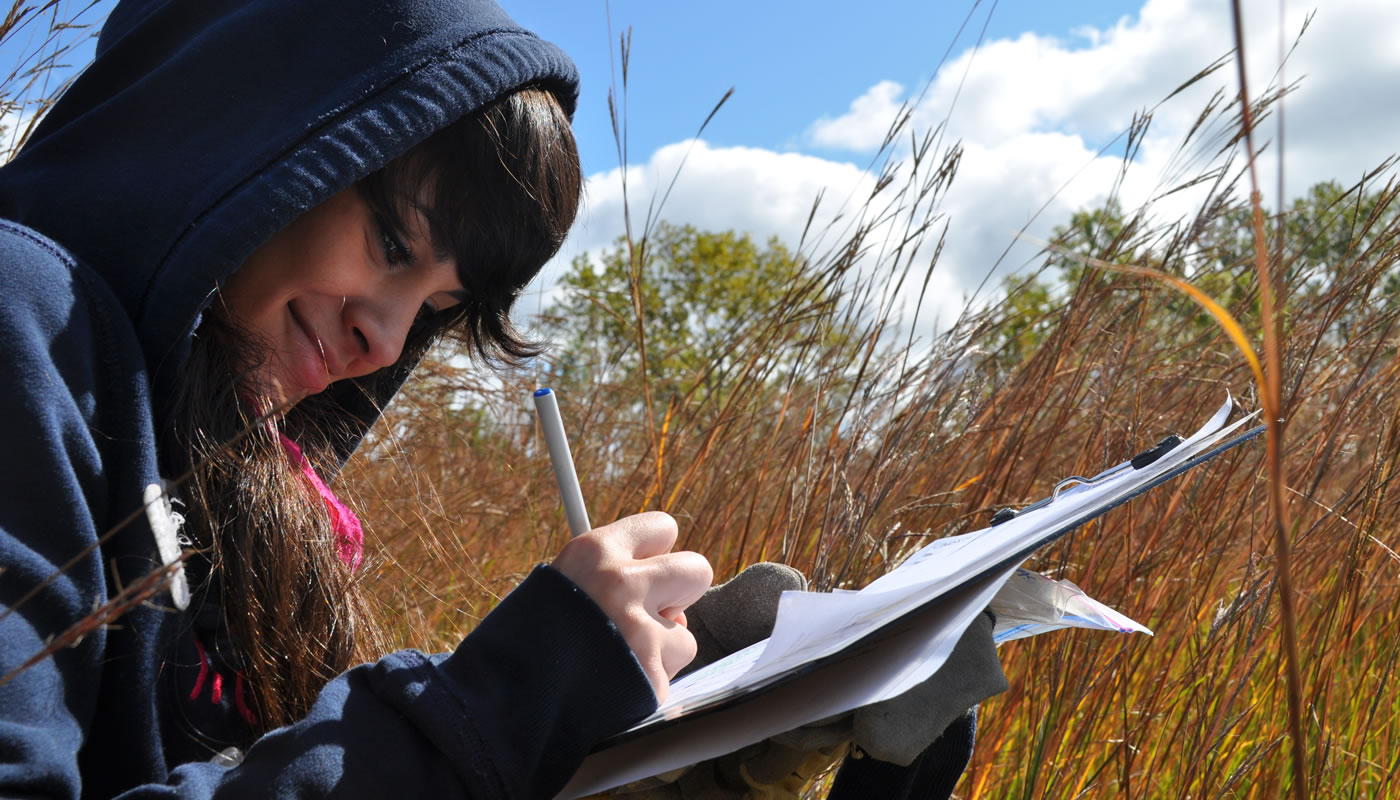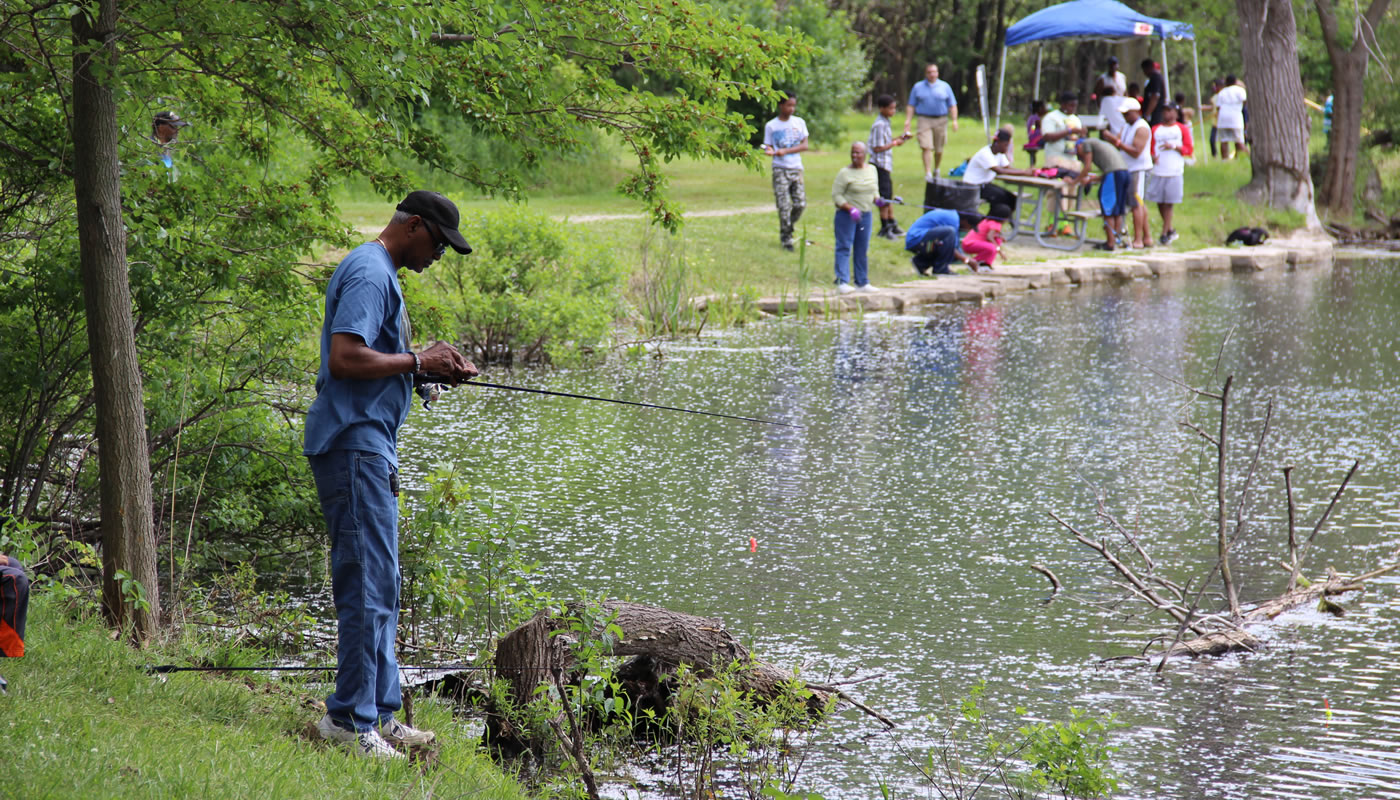Beaubien Woods, located on the south side of Chicago, is home to a mix of prairie, woodland and wetland habitats, with Flatfoot Lake as the centerpiece. With the lake, a boat launch, open grassy areas and picnic groves, visitors can enjoy numerous activities including fishing, kayaking, birding and more.
On this page:
Locations & Things to Do
Beaubien Woods
Entrance
Things to Do & Amenities
- Parking
- Accessible Portable Bathroom
- Fishing
- Accessible Fishing Area
- Ice Fishing
- Volunteer Opportunities
Picnic Groves
- Accessible Grove #1
(with shelter)- Accessible May 1 to October 31.
- Distance to parking: 110 ft
- Distance to accessible portable bathroom: 35 ft
- Capacity: 150 people
Hours
Year-round: Sunrise to SunsetClosures & Alerts
Beaubien Woods Boat Launch
Entrance
Things to Do & Amenities
- Portable bathroom open May 1 to October 31 depending on weather conditions.
Hours
Year-round: Sunrise to SunsetClosures & Alerts
Fishing at Flatfoot Lake
Flatfoot Lake at Beaubien Woods is a 19-acre former strip mine with a maximum depth of 15.4 feet. Features an accessible fishing area on the barrier free fishing pier. Designated ice fishing lake.
*Features accessible fishing area.
- Distance to accessible parking: 390 ft
- Distance to accessible portable bathroom: 296 ft
Boat Launch
A trailered boat launch provides access to the Little Calumet River for canoes, kayaks, rowboats, sailboats and boats with trolling motors.

Nature Notes
Before European settlement, Beaubien Woods was a wet prairie and open savanna community. Early agriculture and grazing altered the soil and removed native vegetation. Railroad and expressway construction further damaged soils and cleared areas for use in construction staging.
Recent ecological restoration efforts by the Forest Preserves, The Field Museum and community volunteers have been successful in restoring some of the site’s original natural communities. Community volunteers, students and interns have cleared the prairies of invasive brush, collected and scattered native plant seed and removed weeds and litter. The Forest Preserves conducts prescribed burns at the site, helping to keep the prairies open and encourage native vegetation. Due to the ongoing restoration, the site contains nearly nine acres of high-quality wet prairie and five acres of oak savanna, with plants such as big and little bluestem, cordgrass, prairie dock, Riddell’s goldenrod and starry false Solomon’s seal.
Common birds in the area include gray catbird, yellow warbler, Baltimore oriole and indigo bunting. Along the Little Calumet River near the boat launch there are large numbers of gulls, and ducks such as mergansers and goldeneyes frequent the area’s open water in winter. An occasional bald eagle will fish from the river. During a quiet winter day, visitors might spot coyote tracks along the shoreline of Flatfoot Lake.

Volunteer Opportunities
Help restore this unique prairie and woodland ecosystem back to health. Trained leaders show you how to identify plants that don’t belong and demonstrate how to safely use hand tools to remove them. Depending on the season, workdays may also include native seed collection for dispersal in areas cleared of invasive species, hand pulling invasive grasses and flowers, as well as nature walks to enjoy the preserve.

